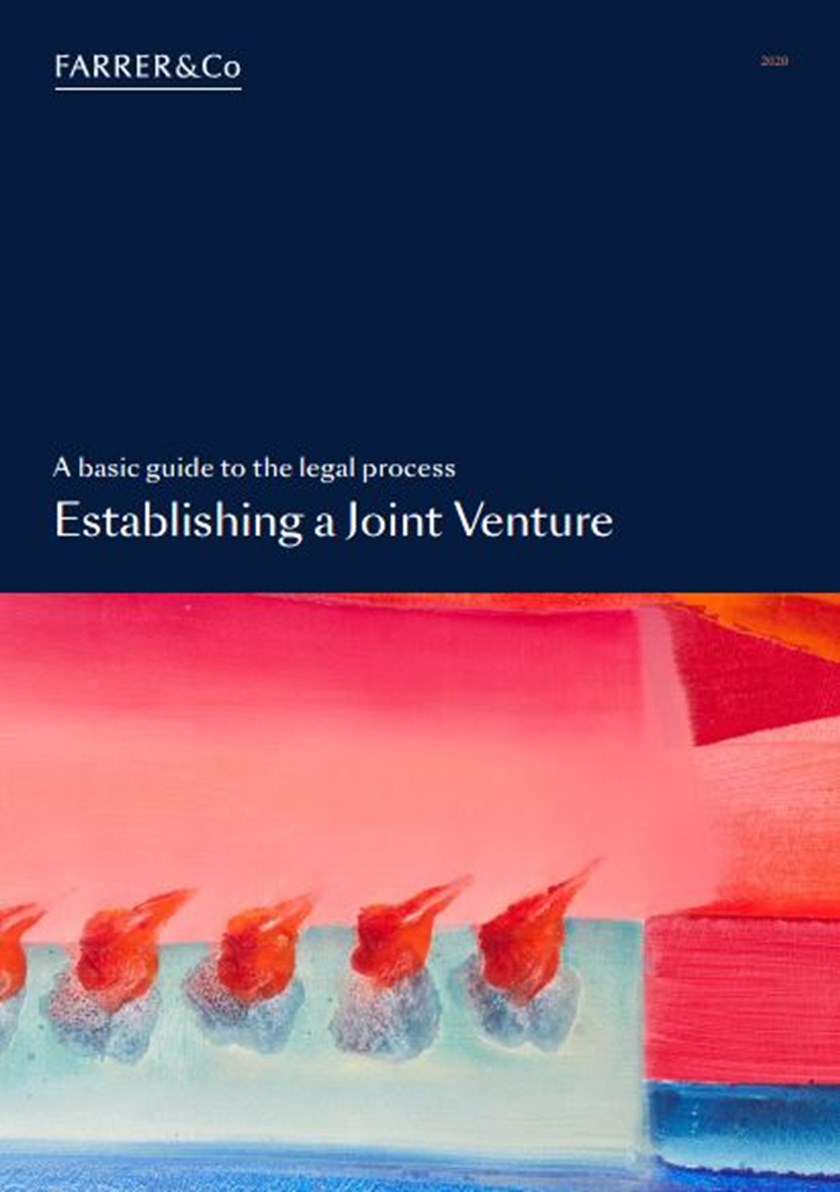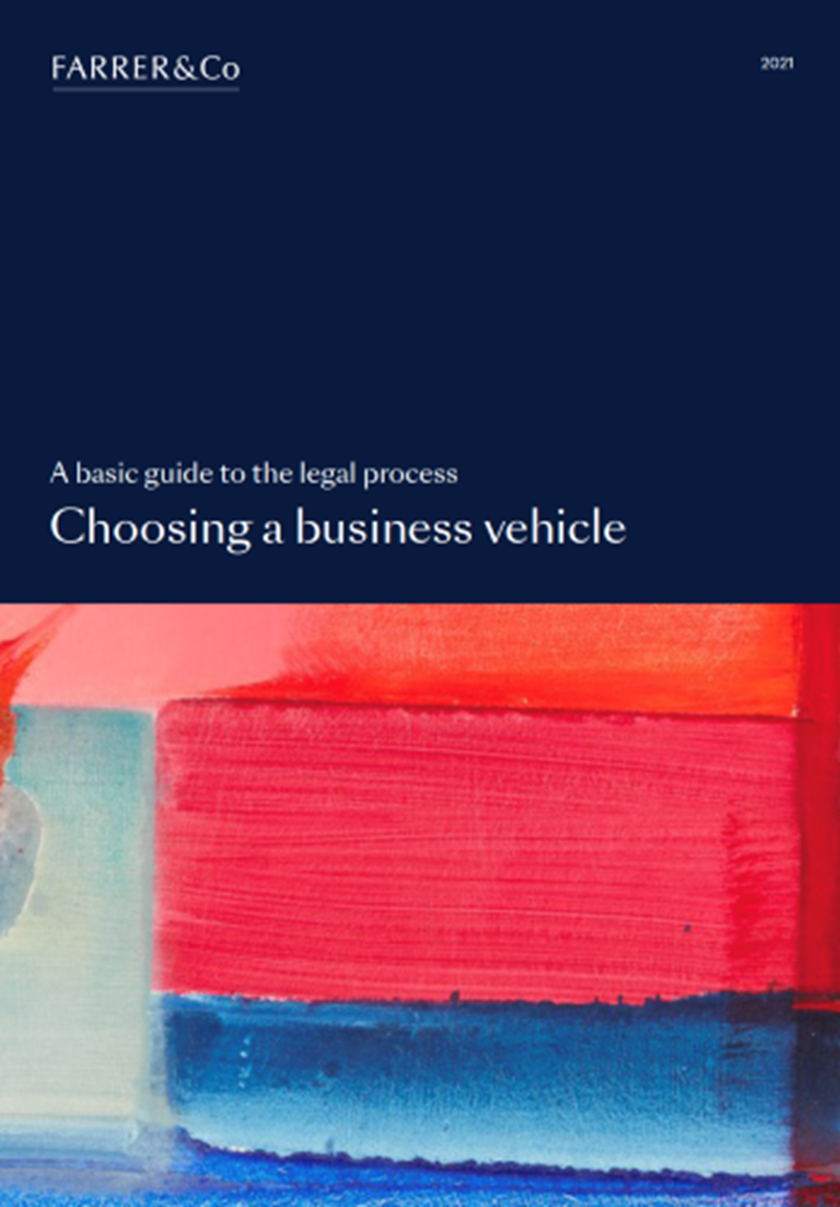Is your LLP agreement due a health check?
Insight

The financial services sector was quick to embrace the Limited Liability Partnership (LLP) as a business vehicle following its inception in 2001. The combination of limited liability, flexibility and tax transparency made it particularly attractive to an innovative and fast-moving industry.
Although originally designed with the traditional professions of law and accountancy in mind, asset and wealth managers in particular found it suited their business models and the prospect of significant National Insurance Contribution (NIC) savings was the icing on an already appealing cake.
There were, at the time, concerns raised. The LLP Act had been rushed through (to avoid the spectre of large accountants moving their business to the Channel Islands) and at just 19 sections it was undoubtedly scant on detail. The substantial body of partnership case law had been explicitly excluded from applying to LLPs so could offer little assistance when it came to interpretation. Together, this meant an uncertain legal landscape and doubt over some fundamental issues. What exactly was the limit of members’ liability? Could employees really also be partners? Was the members' agreement merely a commercial contract or something more? Yet, the advantages were significant enough to outweigh those concerns and the sector adopted the vehicle with enthusiasm.
Nearly two decades on and a combination of case law and new statute has helped clarify some of those uncertainties. For good or bad, much of the litigation relating to LLPs has involved financial services businesses (a combination of significant amounts of money involved and, in some cases, personality types uninclined to shy away from conflict).
Financial services firms which are solo regulated by the Financial Conduct Authority (FCA) will be subject to the extension of the Senior Managers & Certification Regime (SM&CR) from December 2019, in respect of which the FCA published near final rules in its July policy statement PS18/14. Ahead of SM&CR implementation, firms should be looking at their existing governance arrangements, including who will be their senior managers under SM&CR, in preparation for transition to the new regime.
Given the recent case law, various changes to statute and the impetus provided by the forthcoming implementation of SM&CR, now is a good time for firms structured as LLPs to give their members’ agreement a review.
Getting the basics right
Although it may seem obvious and fundamental, it is surprising how many firms do not have a comprehensively signed and dated LLP agreement. Maybe one last sticking point remained on the draft. Perhaps a member was absent on the signing date or the document, negotiated and agreed in principle, was put to one side for signing at the next members meeting. Whatever the reason, an unsigned agreement may not be binding at all and at the very least creates a serious evidential burden for those seeking to rely on its terms.
If your agreement is structured as a deed (which most will be) then signatures must be properly witnessed. And if a member joins after the event then they should execute a valid deed of adherence and must see a full copy of the main agreement. (If he or she can prove they did not then they may not be bound by it.)
The effects of a non-binding document could be very significant since, in the absence of agreement, the LLP Act implies some onerous provisions that are very unlikely to be appropriate. For example, members will have a right to share in all profits equally and will all be granted a say in management. Worse still, the default rules provide no default right to expel a member. Ensuring you have a properly signed and dated written agreement is essential (but, thankfully, also straightforward).
Members or employees?
As already mentioned, many LLPs took advantage of a quirk in the original legislation which provided that all members, whatever their status, should be treated for tax purposes as partners (that is, self-employed and subject to no employer's NICs). This, combined with an oddly-worded section of the Act (s.4(4)), appeared to permit individuals to be treated as partners for tax purposes but be employees for employment law purposes (and, on occasion, led to some very peculiar structures where everyone from receptionist to CEO was declared a 'partner').
From an employment law perspective, this is no longer the case. Recent case law (Reinhard v Ondra) has determined that it is not possible to have this convenient dual status. Many LLP specialists have questioned whether this is the right decision. However, for the time being at least we are stuck with it and any agreement which seeks to treat a member also as an employee should be rectified.
The judgement in Ondra recognised that there would be many firms in this situation and sought to reconcile the difficult position by indicating that an individual may be an employee with shadow membership rights or a member with shadow employment rights. Although the distinction may initially seem academic, there are serious practical implications for the firm if an individual is (unintentionally) granted the full suite of employment protections such as redundancy and unfair dismissal rights.
The Finance Act 2014 also made important statutory changes to the tax position of LLPs, setting out a clear “tick box” test for members to determine their tax treatment. Those failing any part of the three-limbed test are treated as partners for tax purposes and those meeting the test are treated as employees.
Constructive ambiguity in this area, which previously suited some firms, is no longer appropriate or advantageous and firms should lay down clear dividing lines between employees and members (or risk an expensive debate on the topic).
Exits and expulsions
Unsurprisingly, much of the LLP-related litigation has centred on firms' ability to expel members and to the financial entitlements of those members as they leave.
The first point to consider is whether the expulsion provisions set out in your members' agreement are actually workable. Many firms have found implementation of their expulsion process difficult. By way of simple example, if a vote to expel a member is expressed to require unanimity, is it clear that the partner in question is excluded from the vote? If not, it cannot be implied (however absurd it may feel in the circumstances) and turkeys rarely vote for Christmas.
Depriving a partner of his interest in the business is the most serious sanction that can be applied and so the Courts take expulsions extremely seriously. It goes without saying that process need to be properly followed. Is your process clear and easy to operate? Any ambiguity will almost certainly be construed against the firm and any failure in process can invalidate the whole expulsion.
In seeking to expel a member, the LLP or its management board will frequently want to take legal advice. However, legal advice received by the LLP is an information asset of the business like any other and so members are, in principle, entitled to see it. Only by including a provision which entitles management to take legal advice and keep it confidential from the individual concerned can this be avoided.
Claims of procedural irregularity and demands to see legal advice will often be used (sometimes very effectively) to frustrate the expulsion process, but even once over that hurdle, the frustrations do not necessarily end. The firm then needs to consider what might be due to the departing member.
Recent case law (El Makdessi v Cavendish Square Holdings BV) has suggested that a Bad Leaver provision (whereby a leaver is paid less for his interest in the firm in certain circumstances) may be a penalty clause – that is, a clause which seeks to penalise breach of a commercial agreement. As a matter of public policy such clauses are unenforceable and, while other cases have tended to support the commercial agreement between the parties, there is undoubtedly a risk for firms seeking to punish bad leavers too severely.
For similar reasons, the enforcement of restrictive covenants can be difficult if they go beyond what is reasonable and proportionate in the circumstances to protect the legitimate business interests of the LLP. If a firm’s restrictive covenants are too broad in scope, too lengthy in application or bite indiscriminately on members, whether senior or junior, the risk is that they will simply be struck out altogether when challenged (with no opportunity to substitute a more reasonable provision).
Lastly in relation to expulsions, many firms still choose to include an age-based retirement provision in their agreement (which typically require members to retire and 60 or 65). Clearly, those provisions are discriminatory on the basis of age. They are only permissible if they can be objectively justifiable as a “proportionate means of achieving a legitimate aim”. Does your firm really need age-based retirement? Does your members' agreement set out or refer to the legitimate aims you are seeking to achieve (such as succession planning, retention of younger staff or dignity of older ones)? Enshrining those aims in your agreement won't be sufficient in isolation but it can certainly assist the argument that all members signed up to the principles.
Regulatory and technical issues
In a heavily regulated environment, care needs to be taken to ensure your membership agreement is consistent with applicable regulatory requirements. For example, if a member loses their approved person status or is subject to an FCA investigation, does the firm have the right immediately to expel or suspend him or her? If not, the firm may find itself with an un-approved person holding a controlling stake without the ability swiftly to remedy the situation. Most members agreements will include provisions covering these situations but these may well need to be updated to take into account the SM&CR.
The combination of capital adequacy requirements and LLP accounting rules make it necessary to restrict the withdrawal of capital from regulated firms. In short, unless there is such a restriction in your agreement, members' capital will need to be treated as debt (and as such will not be counted towards the regulatory capital position). For this reason the FCA look to see an explicit restriction on capital withdrawal set out in the members agreement to ensure the firm does not breach the applicable prudential requirements. Care needs to be taken to ensure these provisions restricting withdrawal of capital do not conflict, for example, with the members' rights to any payment on exit.
Tax considerations
The choice between using an LLP or a limited company has become a considerably finer one in recent years, not least because of changes to the tax laws. These changes have included the lowering of corporation tax rates (currently 19% but set to drop to 17% from 2020), the 2014 rules on employee members and mixed membership LLPs and the closing of various income and NIC tax planning opportunities for LLPs. This raises the fundamental question of whether an LLP is even the right structure for the business. Firms may want to consider whether, in fact, the limited company is now a more appropriate vehicle and if a transfer of the business to a company is a possibility then it would be prudent to make provision in the LLP agreement for that decision to be taken.
Conclusions
For those firms using the LLP structure, a number of important issues have recently been clarified; although much of the litigation could have been avoided with better drafted members' agreements, some areas were destined to be determined in Court simply because the original law was unclear.
At just 17 years old, LLPs may no longer be in their infancy but nor have they matured through adolescence. The law surrounding them will continue to develop and, as it does so, regular reviews of your members' agreement will be necessary. With the forthcoming implementation of SM&CR, you are likely to be considering your existing governance arrangements, including who will be your senior managers and this could have an impact on your members’ agreement. Now is as good as time as any to consider - does it need a review and health check?
We offer a members' agreement assessment for LLPs. If you would like further information on this or anything covered in this briefing please contact Jon Haley, Grania Baird, Andy Peterkin, David Gubbay, or your usual contact at the firm on 020 3375 7000.
Further information can also be found on the Financial Services, Professional Partnerships and Tax pages of our website.
This publication is a general summary of the law. It should not replace legal advice tailored to your specific circumstances.
© Farrer & Co LLP, July 2018






